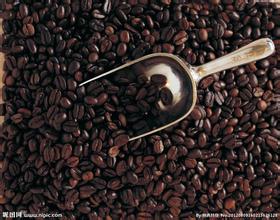Picking and handling of coffee-Brazilian coffee bean processing
Picking and handling of coffee-Brazilian coffee bean processing
In Yunnan, this process is mainly accomplished by natural fermentation. The term fermentation is not 100% accurate because there is no biochemical reaction inside the coffee beans. It is more appropriate to call this process the use of biochemical reaction or hydrolysis to remove mucus. This reaction is caused by natural enzymes in coffee berries.
The fermentation time varies from 6 hours to 72 hours, depending on the temperature, the amount of mucus and the concentration of digestive enzymes. Put the coffee in a fermentor until the mucus is completely decomposed and the beans can be washed.
The key to ensuring the quality of coffee is to stop fermentation at the right time, because excessive fermentation can lead to the emergence of so-called smelly coffee beans. If the fermentation is insufficient or too slow, butyric acid or propionic acid will be produced, both of which will adversely affect the quality of coffee.
The fermented coffee with skin needs to be cleaned immediately after the completion of the fermentation process to terminate the process. However, after removing the mucus and before cleaning, it may be necessary to soak the coffee with skin in clean water for 12 to 24 hours to reduce the bitterness in the coffee drink.
The washing method is also called wet treatment: after the outer pulp of the coffee fruit is removed by the pulp separator within 12 hours after the coffee is picked, the coffee beans are soaked in a large cement tank filled with water to separate the fruit. The coffee beans are then pasted in the fermentation box for about 12-36 hours, containing 15% water after fermentation, and the fermented coffee beans are washed clean with clean water. The coffee beans are dried in a dryer or dried in the sun, and the coffee beans are called "parchment coffee beans", waiting for export.
Fresh fruit-soak soft-remove exocarp-ferment the coffee fruit with pulp in the fermentation tank-rinse the pulp gum with water-dry the coffee fruit with endocarp-remove the endocarp with a peeling machine-polish the seed coat-coffee raw beans
Advantages: coffee beans have stable quality, beautiful color and less impurities
Disadvantages: the processing cost is too high and requires a lot of water.
Note: generally used for higher quality Arabica coffee beans, such as Blue Mountains, Colombia, Mexico, Guatemala, etc.

Important Notice :
前街咖啡 FrontStreet Coffee has moved to new addredd:
FrontStreet Coffee Address: 315,Donghua East Road,GuangZhou
Tel:020 38364473
- Prev

Which kind of coffee grinder is better recommended by the brand
Coffee grinder brand recommended which is better Brazil: the world's most important coffee producing area, accounting for 1% of the world's total output, about 10 states in the vast territory produce coffee beans in large quantities. Brazilian coffee is round, moderately sour and has a strong sweet taste. Known for its smooth taste, Brazilian coffee is considered an indispensable ingredient for mixed coffee.
- Next

Flavor description of Kenyan Coffee varieties Grinding scale production area
The taste of Kenyan coffee describes the taste of the variety grinding scale producing area aroma, rich, fruity flavor, rich and perfect taste. Kenyan coffee has a wonderful fruit flavor, tastes like BlackBerry and grapefruit, and is a favorite of many coffee gluttons. This coffee has an excellent medium purity, crisp and refreshing taste. The flavor is fresh and most suitable.
Related
- What brand of black coffee is the most authentic and delicious? what are the characteristics of the flavor of the authentic Rose Summer Black Coffee?
- Introduction to the principle and characteristics of the correct use of mocha pot A detailed course of mocha pot brewing coffee is described in five steps.
- Which is better, decaf or regular coffee? how is decaf made?
- How much is a bag of four cat coffee?
- How about four Cat Coffee or Nestle Coffee? why is it a cheap scam?
- Which is better, Yunnan four Cats Coffee or Nestle Coffee? How about cat coffee? is it a fake scam? why is it so cheap?
- How about Cat Coffee? what grade is a hoax? which instant coffee tastes better, four Cat Coffee, Nestle Coffee or G7 coffee?
- Process flow chart of coffee making-Starbucks coffee making process what coffee tastes good at Starbucks
- The top ten best coffee beans in the world Rose summer coffee or Tanzanian coffee tastes good
- Yunnan four cat coffee is good to drink?_four cat coffee is a big brand? four cat blue mountain coffee is fake?

